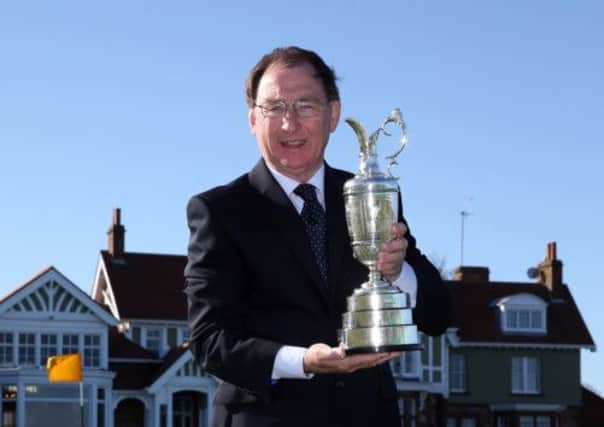Open Championship: R&A confirms slow play will be targeted


At two of its events last year – the Amateur Championship at Royal Troon and the British Boys at Notts – the R&A dished out slow-play penalties after introducing stringent on-course policing in a bid to do its bit in trying to speed up the game at all levels.
Englishman Nathan Kimsey and Spaniard Jon Rahm were punished in their respective events after failing to heed a warning about pace of play when they registered and a similar process will again be in place at this year’s Amateur Championship at Royal Cinque Ports in Kent.
Advertisement
Hide AdAdvertisement
Hide AdHowever, despite the same timing schedules being used for the Open Championship, the R&A has no plans to introduce a similar process of the players sitting down with a copy of the timing schedule.
For the world’s oldest major, the R&A insists it is happy to leave it to the players to read them in their own time in preparation for the event.
“We continue to have a big concern that pace of play is affecting the game and spoiling the enjoyment for many people,” said Jim McArthur, chairman of the R&A’s championship committee. “We are determined to do whatever we can – and that applies to the Open Championship. There is a schedule that we will be applying stringently in The Open and we assume professionals will read all the documentation sent to them.
“We have a policy and we have procedures that we will implement in our own championships. With our Amateur Championship, we sit every competitor down and ask them to read the pace of play guidelines before they register. This year we’ll be putting up a pace of play video on the screen in the registration office.
“We have also been engaging with the Home Golf Unions to create an understanding. We’ve got workshops going on and held one recently for the Scottish Golf Union.
“There is also a batch of documentation that has been sent out to 120 affiliate organisations throughout the world in the hope that people use consistent policies. It’s important that players in different events, in different countries, face the same requirements. We don’t see the players much during the year. We only have a small number of events, so we have to liaise with other organisations. And it’s important that we start at the bottom of the elite, with the top amateurs.”
Guan Tianlang, who falls into that category, joined Kimsey and Rahm on the offenders’ list when he was hit with a slow-play penalty in The Masters, the Chinese 14-year-old’s punishment at Augusta National sparking claims that he’d been unfairly picked on by officials.
Responding to being asked if there was now a perception of golf having one rule for young amateurs and another for the big names, McArthur insisted: “I don’t think that’s the case at all. It’s certainly not the case at the Open Championship. We treat everybody the same.
Advertisement
Hide AdAdvertisement
Hide Ad“Yes, people do have ways of getting round it [the timing schedule]. Sometimes their caddie will walk up and put the bag down while the player is 50 yards behind. In situations like that, officials have to deal with it.
“But, certainly, in terms of dealing with amateurs against professionals, there is no discrimination in how they’re dealt with. If we see someone who has a routine or is not ready to play, we will take them aside and speak to them. That’s important.”
Revealing that pace of play was a “big agenda item” for the R&A’s International Golf Conference in St Andrews this week, chief executive Peter Dawson defended the punishment handed out to Guan in the season’s opening major.
“All that we can do is apply the rules as they have been distributed to the players,” he said. “I was a rules official at The Masters and was listening on the radio to what was going on. If a group gets out of position, they go on the clock. The experienced players catch up and, within the rules, they’re fine.
“The young amateur perhaps didn’t have the experience and, despite many, many warnings, he was caught out badly on more than one occasion. The rules official had no option but to apply the rules. I’m quite sure that, if a professional had done the same thing as the young 14-year-old, he would have had a penalty, too. But the professionals are perhaps more wily.
“The question to ask is, ‘is the system working?’ rather than ‘was it properly applied?’ It was certainly properly applied,” added Dawson. He also denied that longer courses were the root of slow play, adding: “Statistically, that is true, if you compare how long things used to take. But the lengthening of the courses nowhere near explains the lengthening of the rounds. Nowhere.
“We used to play two rounds a day in The Open with four-minute starting intervals. Now we play 11-minute starting intervals with no chance of getting in two rounds.
“If you look back in time, in the 1930s, Muirfield was 6,800 yards (compared to 7,192 for this year’s Open).
“The Old Course at the time was 6,850. So it doesn’t explain the time it now takes to play a round.”